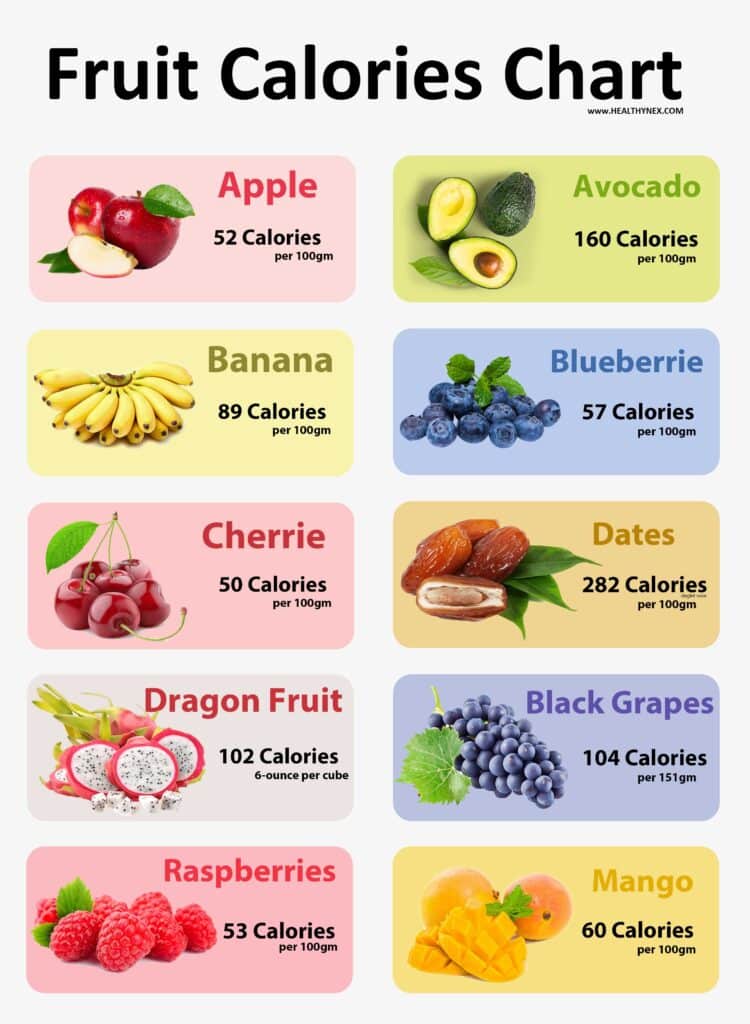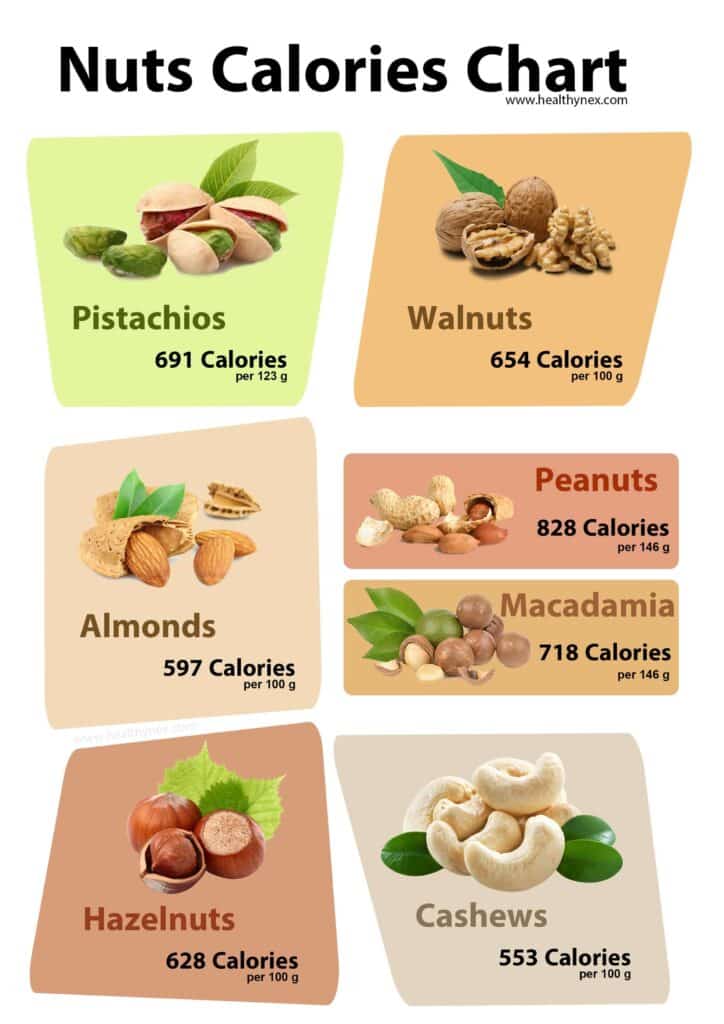Dried fruit is considered a perfect substitute for fresh fruit. Sometimes, it’s harder to obtain dried fruit(reasons include: inappropriate weather and place).
Therefore, dried versions of fresh fruits work well, in providing you the calories and benefits you require, to their fullest.
- A dried copy of fresh fruit- the dried fruit- offers the same taste, but is more concentrated in sugar.

Fresh to dry Fruit Prosses
A fresh fruit from which most of the original water content is either removed naturally, or through various techniques like sun drying, dryers, or dehydrators; is known as a dried fruit.
What more a dried fruit do?
Dried fruit:
- Doesn’t spoil quickly
- Fits easily in your bag/purse
- Can be used in various dishes, and baking goods
- Flavor enhancers
- A lot more vitamins, and fibers than fresh fruit
- A calorie bus
About Calories
- A calorie is a unit to measure energy.
- It’s body fuel.
- Nutritional specialists measure food calories in the term “100grams.”
- Calories help in building muscles and strong bones.
Because dried fruit is a sea full of calories, and not always accession is good. Therefore, to make you know the exact amount of calories in most dried fruits, we have bought a dried fruit calories chart for you.
| Fruits | Amount | Calories |
| Apple | 100g | 52 Calories |
| Banana | 100g | 89 Calories |
| Mango | 100g | 60 Calories |
| Avocado | 100g | 160 Calories |
| Dragon fruit | 100g | 102 Calories |
| Cherries | 100g | 50 Calories |
| Black Grapes | 100g | 57 Calories |
Hence, always be mindful, and peer at “the dried fruit calories chart” before going on your journey to dried fruits.
This will, ultimately, resist mindlessly snacking of dried fruits, handful after handful.
HOW TO SELECT A RIGHT DRIED FRUIT AS PER CALORIES INTAKE?
Here’s how you should select the right dried fruit as per your body’s calories requirements:
- While selecting various dried fruits, always read the nutritional-packaging label.
- In addition to portion size, also pay heed to the added elements in the dried fruit package.
- Beware, that sometimes, additional sugar content has been added to the package to enhance the flavor, and withdrawing microbial cells.
- Go for the brands labeling “no added sugar,” which is sometimes hard to find.
- If you have sulfur- allergies then before buying dried fruit check for sulfur dioxide. This is because most dried fruit packages have sulfur for preservation and preventing discoloration.
DRIED FRUIT BENEFITS:
- They are natural sweeteners, therefore, can be used in baking goods to replace the deadly white sugar.
- If added to smoothies and milkshakes, they enhance flavor and nutrition.
- They are natural allies to all milk and milk-based foods and drinks.
WHAT ARE DRIED FRUIT CALORIES?
Calories found in dried fruits are known as dried fruit calories. The calorie portion of dried fruit is much lower than those found in treats, candy, and cakes.
Hence, dried fruit used in delights is considered a healthier alternative to white sugar.
At the same time, dried mango, banana chips, prunes, and other dried fruits boast a lot of sugar and may contribute to weight gain.
Therefore, we recommend you to watch your calorie portions of the dried food intake.
Here’s how you’ll look for it!

NUTRIENTS IN DRIED FRUIT
As per Harvard Medical School research, dried fruit features a higher fiber content and antioxidant levels, especially phenols, than fresh fruit.
PHENOLS- A DRIED FRUIT NUTRIENT- BENEFITS
- Dried fruit- a phenol-rich compound lowers the risks of heart diseases, several cancer types, and brain disorders.
- This nutrient improves digestive health, and helps relieve gas, and bloating.
But, BEWARE:
Dried fruits, rich in fiber, may aggravate certain digestive disorders.
Raisin (A Dried Fruit)- The Magnificent:
Raisin- a dried fruit- is a dried grape, produced in many regions of the world, is eaten raw, or is used in brewing, baking, and cooking. Scientists and researchers have investigated various health benefits, a Raisin could offer. Here are some reports:
- A 2013 report, published in the Journal of Food Science examines blood glucose, and insulin response to Raisins, more, as compared to other foods and snacks.
- Researchers analyzed that Raisin intake may reduce triglycerides and bad cholesterol levels. Hence, significantly reduces the risk of developing diabetes, and various cardiovascular diseases.
- Researchers and consultants of the California Raisin Marketing Board recommend moderate consumption of Raisins, so Raisin in-takers may stay on the safe side.
As per Dietary Guidelines, in a 2,000-calorie diet, the recommended amount of fresh fruit is two cups per day. In this regard, one cup of fresh fruit equivalents a half-cup of dried fruit.
NUTRIENT CONTENT: FRESH FRUIT VS. DRIED FRUIT
According to the Cleveland Clinic:
- The nutrient content of fresh fruit is the same as that of dried fruit.
However, you should curb dried fruit intake as per our “Dried fruit calories chart”. This is because; you consume more calories from branded/packed dried food that contains added sugar.
Also, it’s easy to overeat dried fruit, as the water content is removed, thereby, making the serving smaller in size.
Hence, dried fruit should be consumed as half the amount in comparison to fresh fruit.
MOST POPULAR DRIED FRUITS- A NUTRITIONAL BREAKUP
Down there we have enlisted one of the most popular dried fruits for you, along with their nutritional content- a break-up, have a look!
Raisins:
- As one of the most popular dried fruits, USDA lists them as having approximately 85 calories, 1.28 grams of dietary fiber, and 18.5 grams of sugar per ounce. This equals 60 raisins.
Prunes:
- Prunes or dried plums, provide 418 calories, 12.4 grams of fiber, and 66.3 grams of sugar per cup.
- Although prunes lack insoluble fiber, still they are considered as providing a laxative effect.
- In a single serving (of half-cup) there exist 2.5 grams of proteins and 13% of your daily iron requirements.
Dates:
- Dates per fruit offer 66.5 calories, 1.61 grams of fiber and16 grams of sugar.
Dried apricots:
- Dried apricots, per cup, offer 314 calories, 9.49 grams of fiber, and 69.5 grams of sugar.
Banana chips:
- Dried banana chips per ounce contain 147 calories, 2.8 grams of fiber and10 grams of sugar.
Peaches:
- Peaches contain, per half-cup, 191 calories, 6.5 grams of fiber, 34% of vitamin A, 18% of iron, with traces of potassium, niacin, and copper.
Apples:
Apples do not offer a great nutritional package, as a serving is often lower in calories than other dried fruits. So, if you are looking for a lighter snack, they’ll work well for you.
- Apples serving, per half-cup, 104 calories, and 3.5 grams of fiber.
Lychees:Lychee is a delicious fruit that’s sold frozen or canned. If dried, they can be a great addition to your diet.
- Lychees one serving of ½ cup provides 221 calories, 4 grams of fiber, 244% of vitamin C, and 3.2 grams of protein.
Currants:
- Currants ½ cup serving offers: 204 calories, 5 grams of fiber, 3 grams of protein per serving, 13% iron, and 18% of the average person’s daily needs for potassium.
Pears:Try adding pears in various salads, and you can use them also as toppers.
- ½ cup Pears serving offers: 236 calories, 7 grams of fiber with vitamin C, iron, vitamin K and copper.
Tomatoes:Tomatoes, as pizza toppings and used in other savory recipes, if dried, become a great nutritional choice.
- In a ½ cup serving, they offer 69 calories, 3.5 grams of fiber, with added iron, vitamin C, niacin, potassium, magnesium, and manganese.
Jujube:Jujubes are not common as other fruits are, but it can be your fun new food to try.
- As a good source of vitamin C and Riboflavin, they, per half-cup offer: 229 calories, 0 grams of fiber.
This was all we’ve researched, and jotted down for you, regarding the most popular dried fruit along with their break-up.
Now, let’s move further!
WAYS TO INCORPORATE DRIED FRUITS TO YOUR DIET
How to incorporate dried fruits into your diet? – can be the next pop-up query that might make you worried.
In that regard, only eating dried fruits as a snack won’t work for you.
Hence, to make you cover, down below we have researched and gathered some points on the ways to incorporate dried fruits into your diet. Hope you’ll find them helpful- So, let’s go!
- Diversify your meals, and boost your nutritional intake by using dried fruit in creative ways during cooking.
- Consider adding dried fruit as a topping. For example: add raisins to oatmeal, cranberries to salads, or dried strawberries to cereals.
- You can use dried fruits as an addition to sauces. Just ensure that you rehydrate them before adding them to your dishes.
- Consider adding dried fruits to various types of bread, and pastries that may include raisin bread or cranberry scones. But, make sure you soak them in water before adding them to your recipes.
- Lastly, you can add dried fruits in drinks like wine, tea, water, or juice, for rehydration.
BENEFITS OF THE DRIED FRUIT CALORIES INTAKE
You already are well aware of the benefits of dried fruit offers. But, for you, we’ve compiled some compact points regarding the benefits of the dried fruit calories intake- just as a recall for you!
Dried fruits are very popular for a multitude of reasons. Some of them are:
- Eating dried fruit is associated with improved health.
- Dried fruit provides many of the essential minerals, vitamins, phytonutrients, and, fibers that keep you active all day long.
- Dried fruit doesn’t spoil quickly, as compared to fresh fruits.
- Dried fruit is an easy snack to pack, especially for activities like hiking, and other adventures.
THE HYDRATED VS. DEHYDRATED FRUIT VERSIONS
- 100 grams of fresh plums contain 46 calories, whereas 100 grams of prunes- the dried plums- have 240 calories.
- When you transform fresh fruit into their dried forms, some of the vitamin content is lost during the drying process.
- From equal amounts of fresh and dried plums, you are eating 16% and 1% of vitamin C, respectively.
High Calorie Fruits Chart

CONCLUSION
Here our guide to the dried fruit calories chart ends. We have provided you with the well-researched amazing facts and figures that you might be longing for a long time.
Dried fruit, on whole, is an excellent source of nutrition. It’s a fruit with most of the water content removed, but still features awesome sweetness level, enhanced flavor, and rich nutrition.
Although dried fruit tends to be high in calories, the nutrition label will show that it is a good source of vital nutrients as well.
To enable you to select and add the right amount and right fruit to your diet, we’ve bought you the diet fruit calories chart. Go, and check the calorie chart for your favorite type of dried fruit to determine the calories and nutritional information.
GOOD HEALTH- HAPPY YOU!



